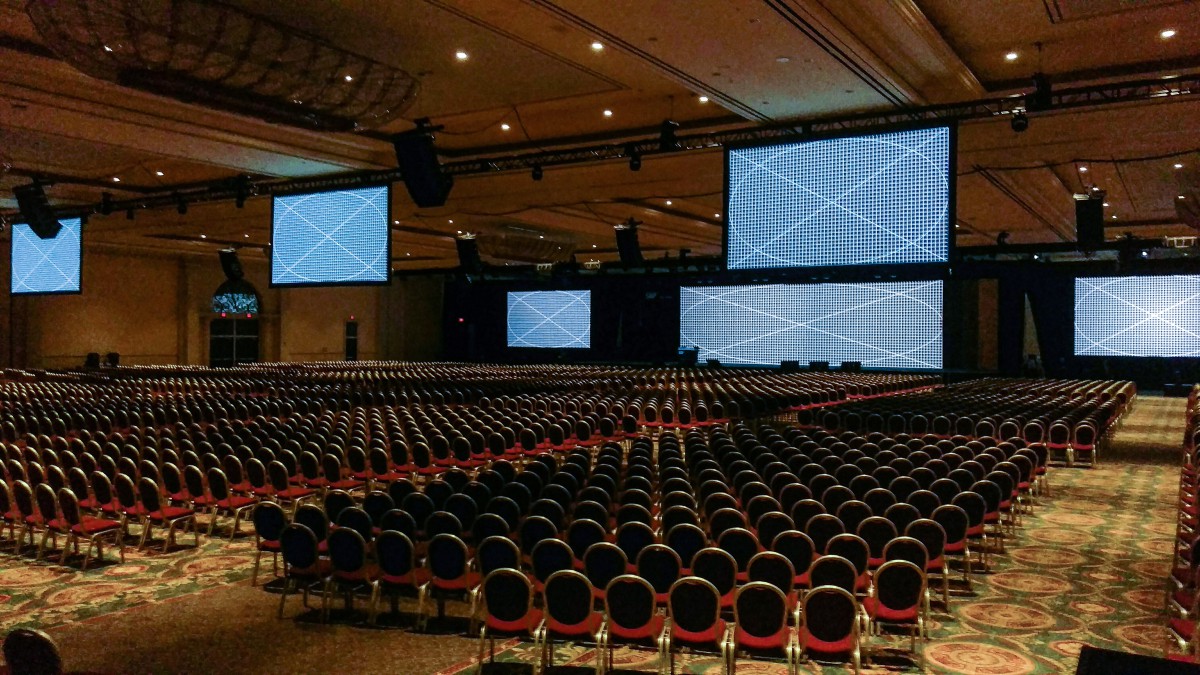
Are you planning a meeting or putting on a show? Sometimes it’s hard to tell at the start of event planning when attendees, space and objectives are still in the incubation phase of development.
But as you gain clarity about what the event is about and who it’s for, certain inflection points offer telltale clues.
We’ll break down when your event requires a simple AV equipment setup, a professionally executed and choreographed performance, or something in between.
Now, most meeting planners don’t want to get down into the weeds with all the gory technical detail we AV people geek out over. What you want is guidance on how to pull off your event no matter how simple or involved it turns out to be.
So, what’s the difference between planning a meeting or putting on a show?
Typically, but not always, meetings are smaller gatherings where presenters or panels are introduced and directly present information in a somewhat staid and forthright manner with little flurry or fanfare.
Seminars, internal team meetings, lunch-and-learns, small corporate recognition programs, and some team-building events bring single or multiple speakers together in one place. Proceedings will last anywhere from 60 to 120 minutes.
From an AV and event staging perspective, these are simple affairs to set up and execute. A projector and a screen — where a PowerPoint or Keynote presentation will be front and center — and a basic PA system made up of one or two loudspeakers and a mic will be the extent of the tech required.
Size, however, is not always the single, determining factor where a gathering won’t require a lot of AV and accompanying production.
Where an organization is trying to excite its audience about being there and eliciting an emotion are instances that require a bit of stagecraft help convey a message. Walk-up music between speakers, ballyhoo lighting and meeting kickoff sizzle video could be elements of a smaller gathering.
Where things start to slip into a gray area of what constitutes a meeting or a show is when a specific group of people are involved or showcased: executives.
Add anyone who ranks near or in the company C-Suite and event planners take a much harder look at meeting execution.
Proceedings where executives usually show up (and bring their critical eye for detail) will be organization milestones, appreciation events, some executive retreats and incentive programs. They’ll expect everything to go right and you’ll want the technical execution to match.
The other events where executives are always present are annual, biannual and quarterly meetings. Running the size range, from small groups to a hall of thousands, these important business events for boards and shareholders had better be flawless.
But, events like these can be, and sometimes are, just simply larger meetings.
That brings us to the two defining and intertwining elements where you’ll know you’re executing a show instead of a meeting: equipment and labor. Delivering a show requires plenty of gear and the experts to put it together.
A true show is not just an event. It’s theatre. Technically complex AV and staging deliver on a designed theme. These demand elaborate backdrops, intricate lighting, crisp production values with planned and precise visual and audio cues work together to create an audience experience.
Events where this kind of stagecraft is expected are product launches and multi-day conferences.
From a technical perspective, you’ll expect an abundance of high-end everything. You’ll need theatre-quality sound; multiple screens and DLP projectors; advanced video recording; video switching, processing and presentation equipment; dazzling and impactful lighting, and precision presentation and communication controls.
And where there is a show, you’ll need AV and event professionals to run it.
You may need a stage manager, a graphics engineer, producers, and sound and video and lighting engineers to execute elaborate staging design. You’ll then keep those same engineers on site to keep the proceedings and equipment running smoothly. Certainly, these are capabilities beyond what a hotel or in-house AV provider is capable of.
Of course, whatever the event, you’ll balance your needs based on your budget. This is where your AV partner can work with you to deliver the best level of quality.
So, as you look over your slate of events, take a closer look at your audiences, participants and expectations. You’ll get a better sense of when to execute a meeting or declare, “It’s show time!”